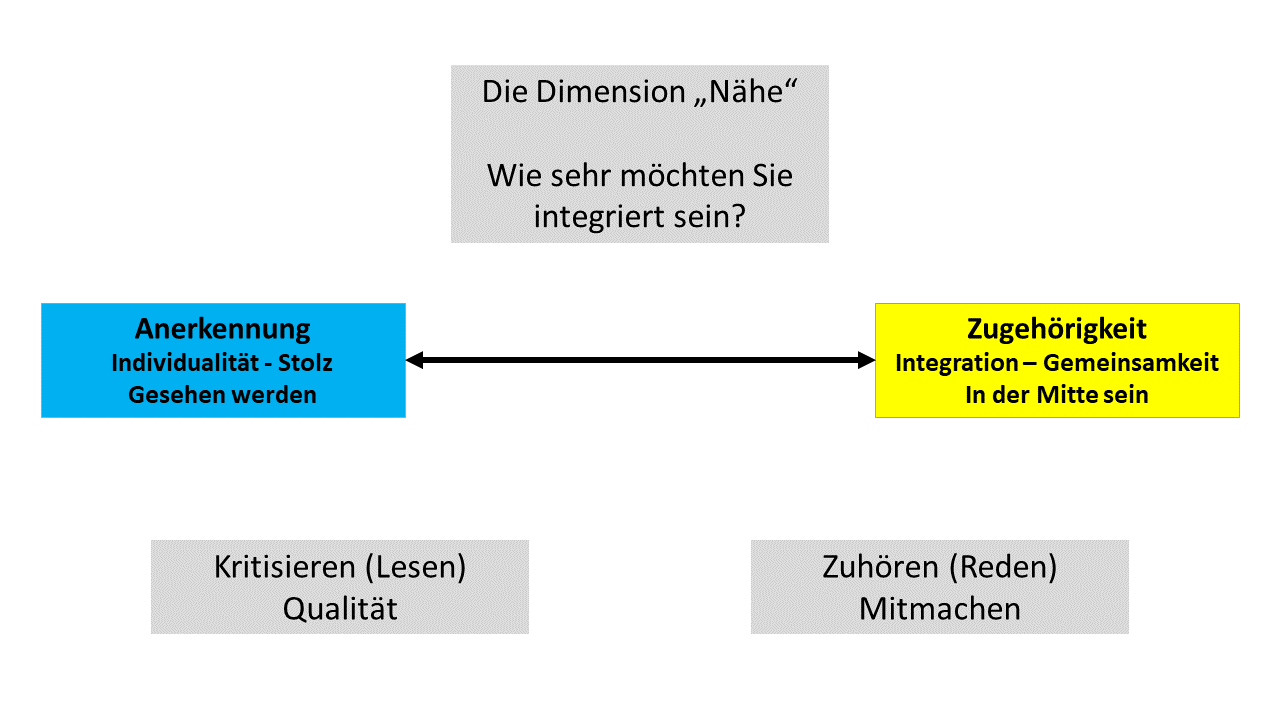Basic needsThe tension of proximity
People have to decide between the need for belonging (integration) and recognition (individuality), i.e. determine the right distance to other people for themselves. How close does one person want to be to others? Does the self want to give up all distance and merge with others to form a unity? Or does it need a certain distance in order to be seen by others and perceived as an independent person? What one person will experience as loneliness is happy freedom for another. What some people perceive as pressing peer pressure is a wonderful feeling of intimate belonging for people with a different personality structure. Both basic needs are existential in nature. It is important to find the right balance or rhythm in order to do justice to both personality traits. While the affiliation part seeks closeness, the recognition part needs the necessary distance to be able to turn and move around, to be recognized and taken seriously by others and to be served when necessary. Even in the first few months after birth, it is vital to stand out and be recognized as an individual being. An infant is always something very special. The need for individuality ensures its uniqueness by ensuring that it is taken to the breast by its mother, crying loudly if necessary.
The recognition component is the reason why the peace and quiet of others is disturbed. Normally, the infant later succeeds in attracting the attention of the child who plays loudly in the foreground and even later the adult who behaves conspicuously individually. Even if the need has to be long and very conspicuous, at some point there will be someone who satisfies the hunger for recognition. The need for integration can be a support in finding the right group that guarantees the right feedback and is recognized as an expert opinion. As in the dimension of height (assertiveness/security), it is important to find the right balance in the dimension of closeness in order to become a valuable person in society. This describes the conflict between the positive esteem of others and the preservation of self-esteem by Rogers. In the needs pyramid, this dimension is to be prescribed from the third level onwards. In this area of conflict, the achievement motive and the contact motive are included and a clear separation of behavior becomes even more difficult.

